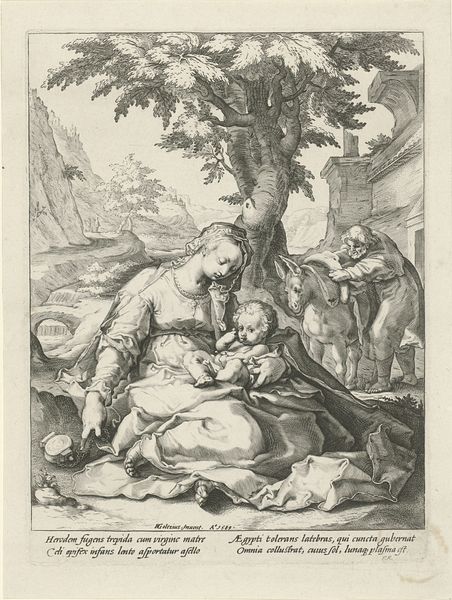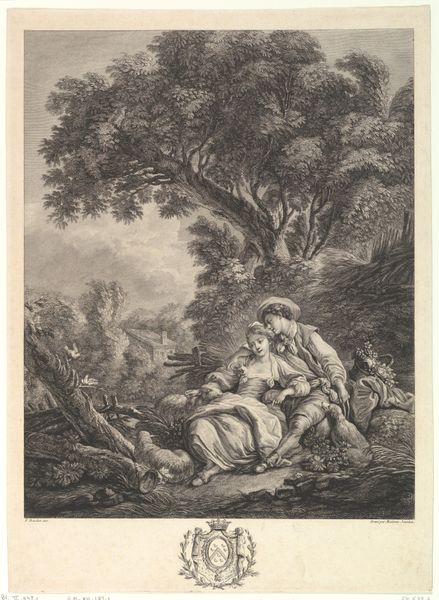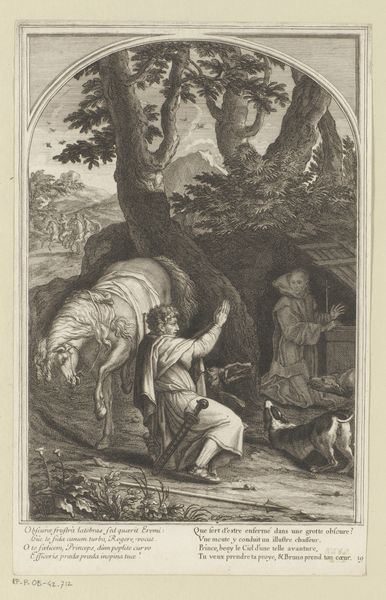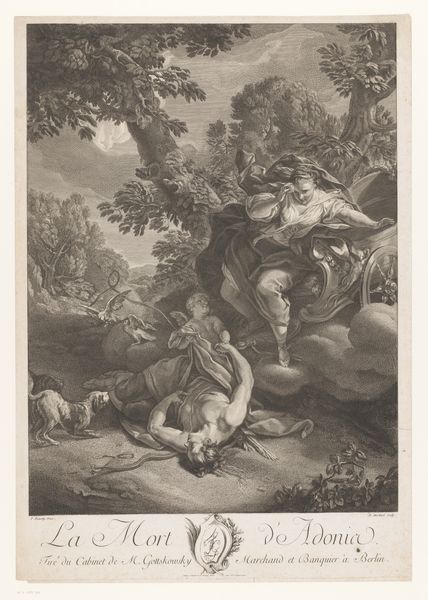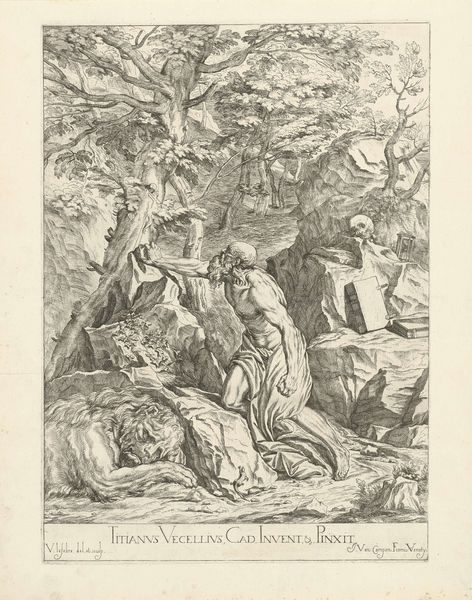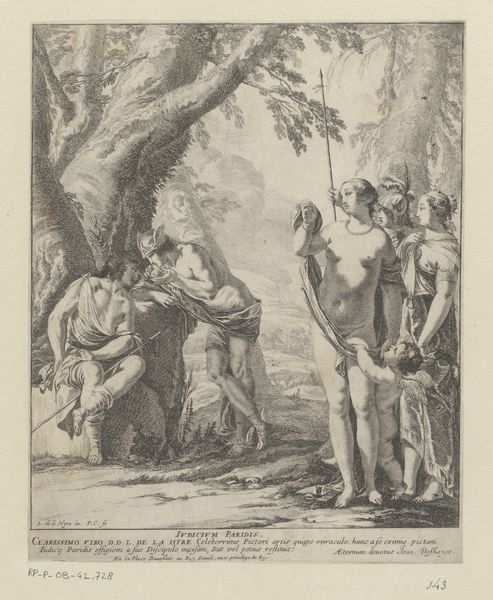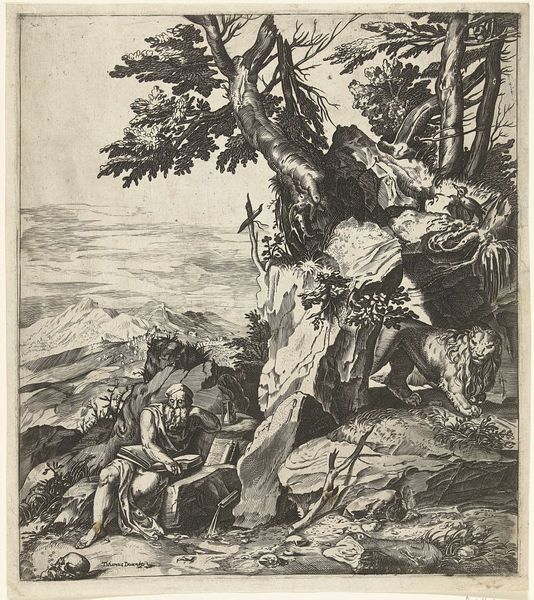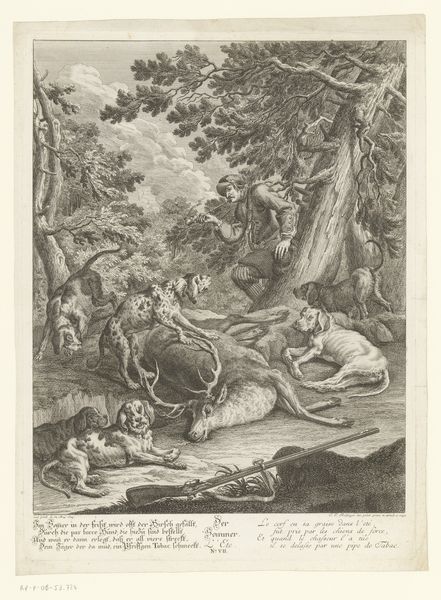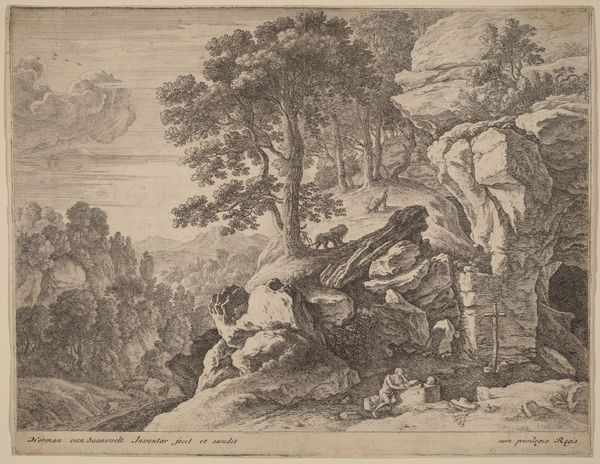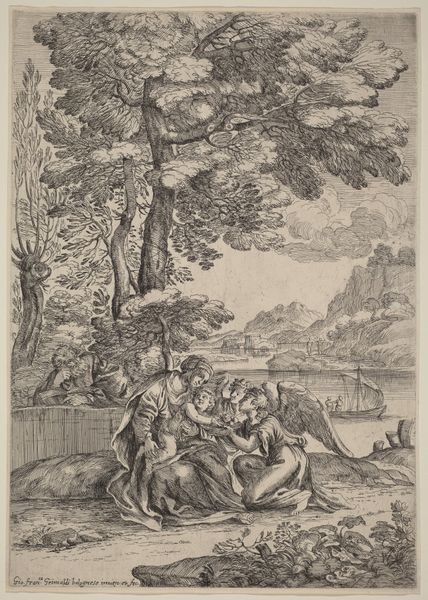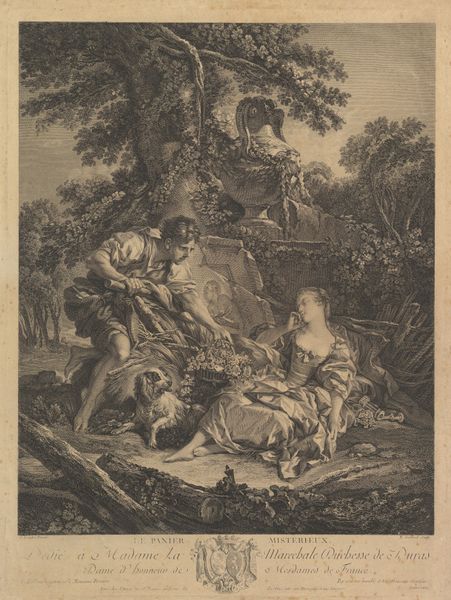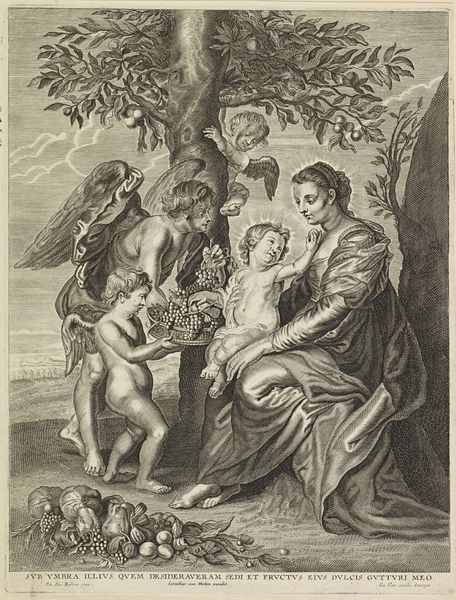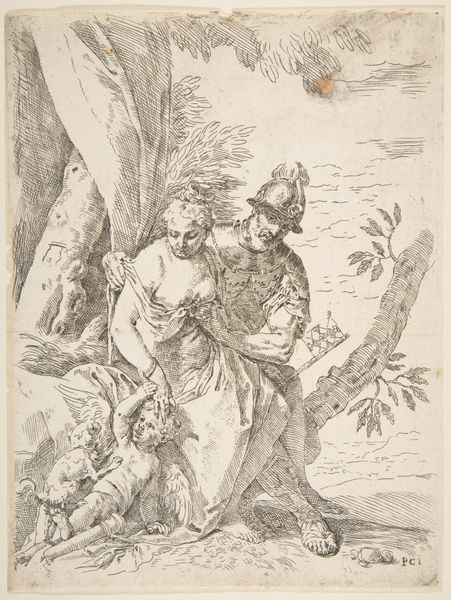
Holy Family with St. Elizabeth and St. John the Baptist 1588
0:00
0:00
drawing, print, ink, engraving
#
drawing
#
ink drawing
#
narrative-art
# print
#
pencil sketch
#
landscape
#
figuration
#
ink
#
pencil drawing
#
portrait drawing
#
northern-renaissance
#
engraving
Dimensions: 36.8 x 29.2 cm
Copyright: Public Domain
Curator: Looking at this, the overwhelming sense I get is one of serene isolation. Editor: Precisely! We're observing Jan Muller's engraving, "Holy Family with St. Elizabeth and St. John the Baptist," created in 1588. It resides here at the Metropolitan Museum of Art. Curator: That isolation, though – is it simply a product of the northern renaissance style and subject, or does the making of it contribute? I see lines, careful and methodical, almost scientific, as if pinning down an ideal form but also constructing the scene from distinct pieces, like a mechanical assemblage. Editor: Interesting. From a historical viewpoint, these religious scenes, particularly during that period, were incredibly popular— almost a form of cultural currency. It spoke to very particular religious sensitivities and obviously reflected very deliberate socio-political pressures exerted onto art and art production. Consider how images like this shaped collective faith and perhaps even solidified existing power structures. Curator: You're right. It's hard to ignore that undercurrent. Still, what strikes me is how the labor itself leaves a very palpable mark on the final product, transforming what would simply be an iconic image, that exists outside material restraints and transforms it into a collection of constructed, manufactured, materials: ink on paper. I am reminded, too, that in its creation the work becomes, a tradable item, destined for purchase, distribution, consumption. Editor: True, and this image served multiple functions within society. It's not just about religious piety. Think of it as a visual manifestation of prevailing theological concepts—accessible to even those who could not read religious texts. It became a teaching tool, but it was simultaneously also an art object appreciated by different social groups in Europe. Its power lay in being a product of meticulous engraving while also serving broader political, pedagogical goals in society. Curator: So the consumption and creation become almost a double process then? Interesting how methods of fabrication in Muller's work directly feed into this political reading too! I mean that landscape element, almost acting as a backdrop but actually dominating that familial, intimate scene... Editor: Absolutely. Thinking about Muller's piece really encourages us to question who it served, what messages it sent to its audiences, and how its creation became this intricate socio-cultural exchange. Curator: An exchange made even more explicit because you can almost literally see that painstaking crafting process, with the finished work being the record.
Comments
No comments
Be the first to comment and join the conversation on the ultimate creative platform.
